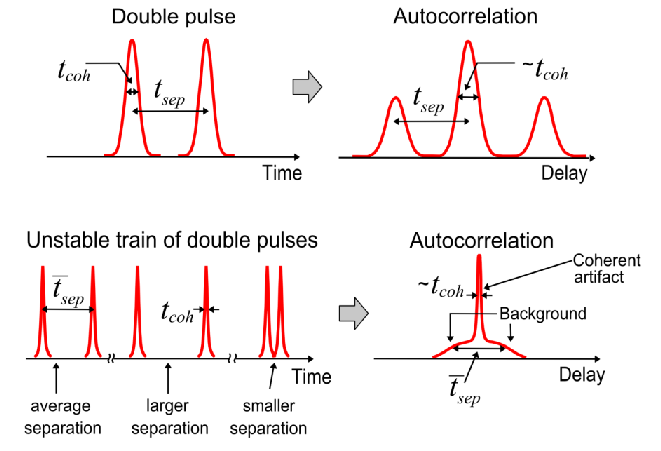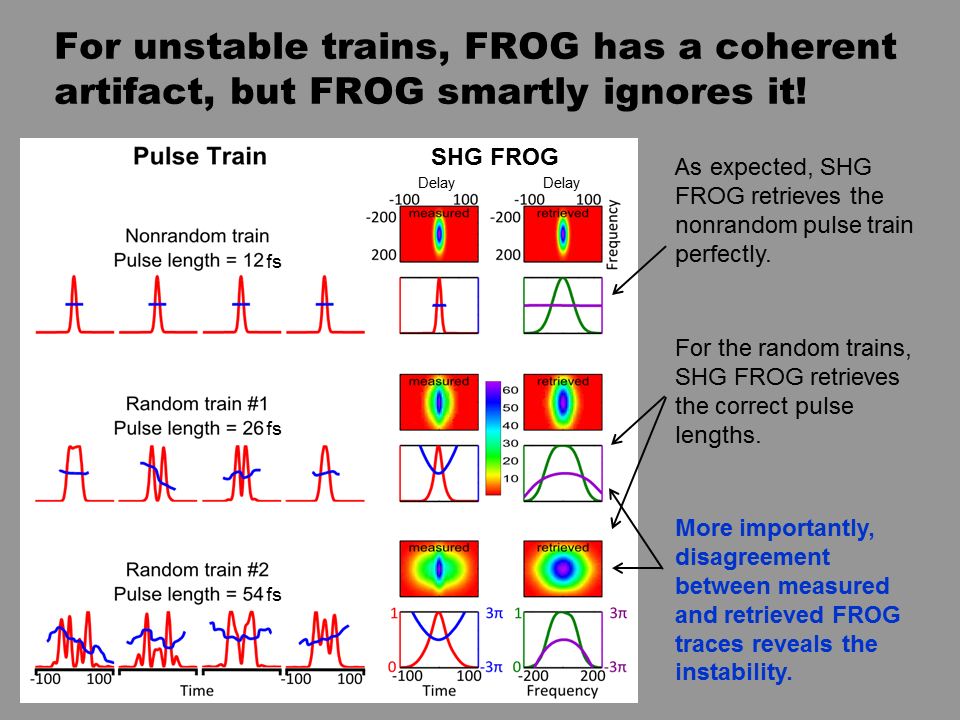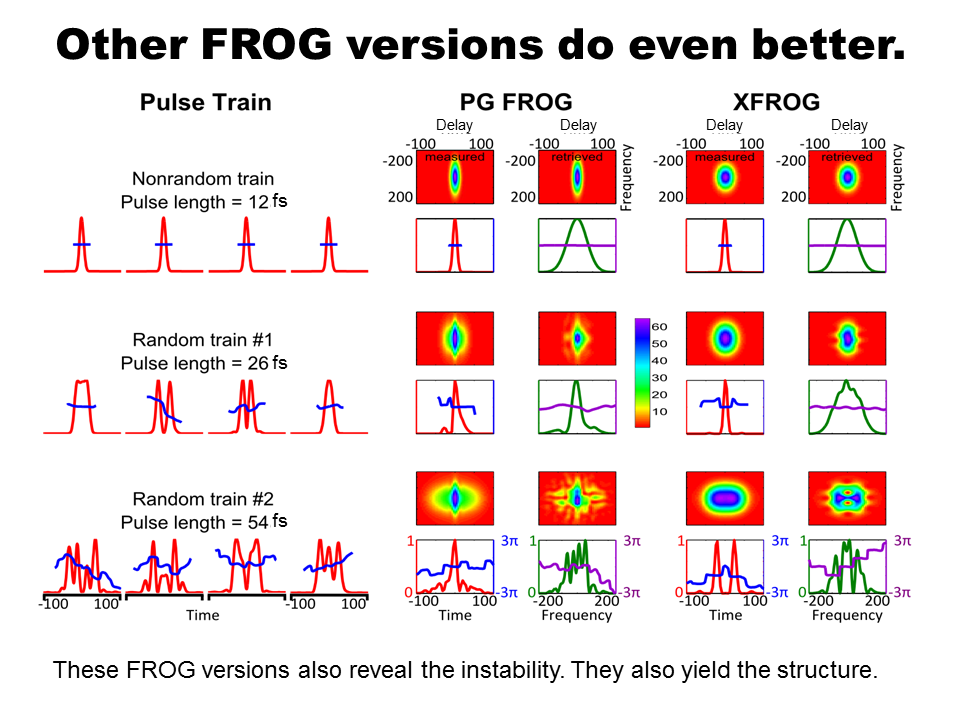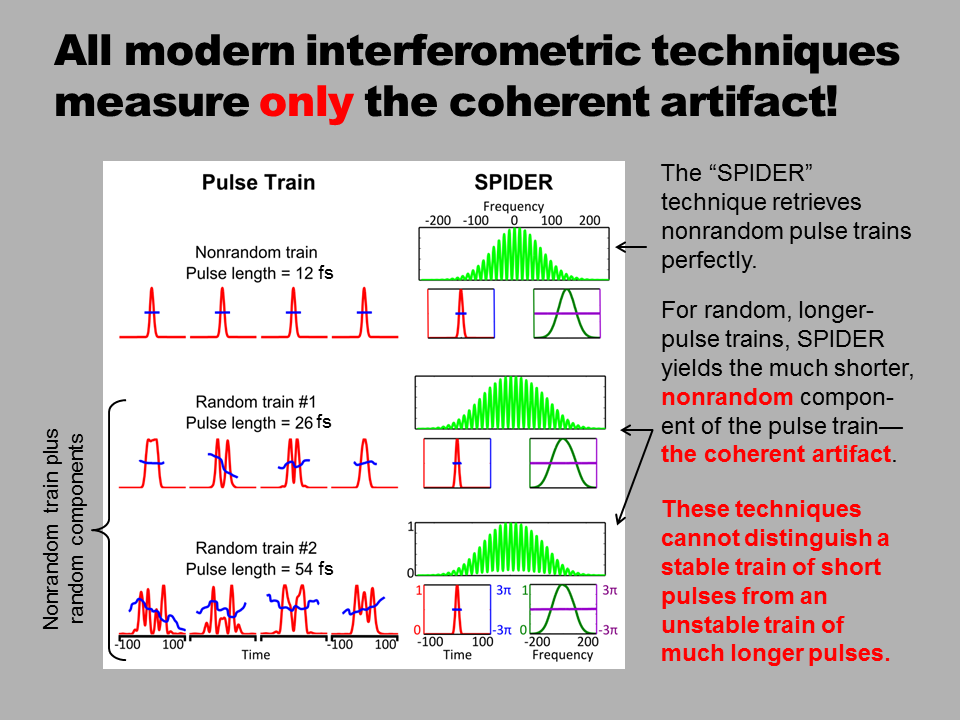The Coherent Artifact in Modern Pulse Measurements
Nearly all lasers have fluctuations. In particular, their pulse shape (the intensity and phase) varies from pulse to pulse. Unfortunately, when a measurement averages over many different events, it faces an impossible task: providing one result when no single result can be correct. In ultrafast optics, this issue has been particularly problematic when using the traditional method for measuring laser pulses, called intensity autocorrelation and introduced in the 1960s. When autocorrelation was used to measure trains of different, complex pulses, the resulting measured autocorrelation trace vs. delay (see the figure below) consisted of a narrow spike atop a broad structureless background. Although early researchers often mistook the spike, or “coherent artifact,” for the measure of their pulse length, its width actually only yields the much shorter, nonrandom (“coherent”) component of the pulse. The correct pulse length is actually almost always much longer and is instead indicated by the temporally much broader background, which also takes into account the much longer, random (“incoherent”) pulse component.

So how does FROG do when measuring an unstable train of pulses? Much better than autocorrelation! There are various versions of FROG, depending on the nonlinear-optical process involved, such as SHG (second-harmonic generation), PG (polarization gating), and XFROG (cross-correlation). But all retrieve the correct pulse length. And most retrieve the structure in the pulse intensity and spectrum. No method ever devised does better in such a difficult measurement situation!


Unfortunately, numerous "new" techniques have emerged that fail miserably when confronted with trains of unstable pulses. This is unfortunate because there is no "stability meter" that can verify that a pulse train is stable, so this must be the job of the pulse-measurement technique. Alas, alternative methods cannot distinguish between a stable train of short simple pulses and an unstable train of long complex pulses. It's difficult to imagine a more serious problem with a pulse-measurement device.
To appreciate this problem, we show below a demonstration of the performance of the so-called SPIDER technique for stable and unstable trains of pulses. As you can see, it can significantly under-estimate the pulse length and pulse-train stability, and you'd never know it from the measurement. The problem is that lasers are often unstable, and a pulse train must be considered guilty of instability until proven innocent. Essentially all other methods perform similarly badly.
Measurements using such techniques are at worst wrong and at best unconvincing.
But not so for FROG.

So FROG is the only technique that actually can distinguish a stable pulse train from an unstable one. This is remarkable in view of the fact that the FROG designs above necessarily average over many pulses. Think about it: a spectrometer will average over many pulses and also won't give any indication of whether the spectrum a of each pulse in the train was the same or not. So it's pretty amazing that FROG can do this. It's because FROG over-determines the pulse by measuring a two-dimensional trace (in order to find one-dimensional quantities, like the intensity and phase), and this extra, redundant information turns out to be quite useful.
Of course, a single-shot method would be much better, as it would allow us to measure every pulse in the train. Fortunately, FROG can be performed on a single-shot basis. In particular, a simple, elegant version of FROG, called GRENOUILLE (the French word for "frog"), naturally operates single-shot. Even better, compared with a multi-shot FROG, GRENOUILLE is less expensive, more compact, much more robust, much easier to use, and virtually impossible to misalign.
PDF summary of the coherent artifact
Copyright © 2022 Swamp Optics, LLC. All Rights Reserved.



